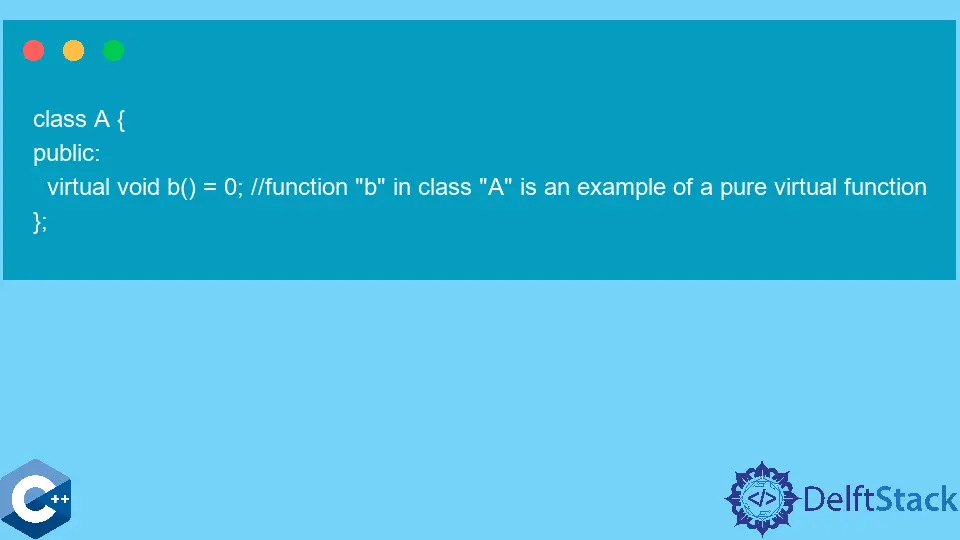How to Implement Interfaces Using Abstract Class in C++
- Understanding Abstract Classes
- Implementing Abstract Classes
- Advantages of Using Abstract Classes
- Conclusion
- FAQ

In the world of C++, the concept of interfaces can be a bit tricky, especially since the language does not have a built-in interface keyword like some other programming languages. However, abstract classes serve as a powerful alternative, enabling developers to define a contract for derived classes without implementing any functionality.
This article will explore the definition, properties, and implementation of abstract classes in C++, demonstrating how they can effectively mimic interfaces. By the end of this guide, you will have a solid understanding of how to use abstract classes to create flexible and reusable code.
Understanding Abstract Classes
Before diving into implementation, it’s essential to grasp what an abstract class is. An abstract class in C++ is a class that cannot be instantiated on its own and is designed to be a base class for other classes. It typically contains at least one pure virtual function, which is a function declared with = 0 at the end of its declaration. This indicates that the derived classes must provide an implementation for these functions.
Properties of Abstract Classes
- Cannot be Instantiated: You cannot create an object of an abstract class directly.
- Can Have Data Members: Abstract classes can contain data members, constructors, and destructors.
- Can Have Concrete Methods: They can also have methods with implementations, allowing for shared functionality among derived classes.
Here’s a simple example to illustrate an abstract class:
class Shape {
public:
virtual void draw() = 0; // Pure virtual function
virtual double area() = 0; // Pure virtual function
};
In this example, Shape is an abstract class with two pure virtual functions: draw() and area(). Any class that derives from Shape must implement these functions.
Implementing Abstract Classes
To implement an abstract class in C++, you need to create a derived class that overrides the pure virtual functions. This allows you to define specific behaviors for each derived class.
Example of Implementation
Let’s create two derived classes, Circle and Rectangle, that implement the abstract class Shape.
#include <iostream>
#include <cmath>
class Shape {
public:
virtual void draw() = 0;
virtual double area() = 0;
};
class Circle : public Shape {
private:
double radius;
public:
Circle(double r) : radius(r) {}
void draw() override {
std::cout << "Drawing a Circle" << std::endl;
}
double area() override {
return M_PI * radius * radius;
}
};
class Rectangle : public Shape {
private:
double width, height;
public:
Rectangle(double w, double h) : width(w), height(h) {}
void draw() override {
std::cout << "Drawing a Rectangle" << std::endl;
}
double area() override {
return width * height;
}
};
int main() {
Shape* shape1 = new Circle(5);
Shape* shape2 = new Rectangle(4, 6);
shape1->draw();
std::cout << "Area: " << shape1->area() << std::endl;
shape2->draw();
std::cout << "Area: " << shape2->area() << std::endl;
delete shape1;
delete shape2;
return 0;
}
In the code above, we define two classes, Circle and Rectangle, that inherit from the abstract class Shape. Each class provides its own implementation of the draw() and area() functions. In the main() function, we create instances of Circle and Rectangle using pointers to Shape, demonstrating polymorphism.
Output:
Drawing a Circle
Area: 78.5398
Drawing a Rectangle
Area: 24
The output shows that both shapes are drawn, and their respective areas are calculated correctly. This example illustrates how abstract classes can be used to enforce a contract for derived classes while allowing for flexibility in implementation.
Advantages of Using Abstract Classes
Using abstract classes in C++ has several advantages:
- Code Reusability: You can define common functionality in the abstract class and reuse it across derived classes.
- Encapsulation: Abstract classes help encapsulate behavior, making your code easier to maintain and extend.
- Polymorphism: They allow for polymorphic behavior, enabling you to handle different derived classes through a common interface.
By leveraging these benefits, you can create a more modular and maintainable codebase.
Conclusion
In summary, abstract classes in C++ provide a robust way to implement interfaces, allowing developers to define contracts for derived classes without providing implementations. By understanding how to create and use abstract classes, you can enhance the flexibility and reusability of your code. This approach not only adheres to object-oriented principles but also fosters cleaner, more maintainable software development practices.
FAQ
-
What is an abstract class in C++?
An abstract class is a class that cannot be instantiated and typically contains at least one pure virtual function. -
Can an abstract class have concrete methods?
Yes, an abstract class can have methods with implementations that can be shared among derived classes. -
How do you declare a pure virtual function?
You declare a pure virtual function by appending= 0to the function declaration in the class. -
Can you create an object of an abstract class?
No, you cannot create an object of an abstract class directly.
- What is the purpose of using abstract classes in C++?
Abstract classes define a contract for derived classes, allowing for polymorphism and code reusability.
Nimesha is a Full-stack Software Engineer for more than five years, he loves technology, as technology has the power to solve our many problems within just a minute. He have been contributing to various projects over the last 5+ years and working with almost all the so-called 03 tiers(DB, M-Tier, and Client). Recently, he has started working with DevOps technologies such as Azure administration, Kubernetes, Terraform automation, and Bash scripting as well.
